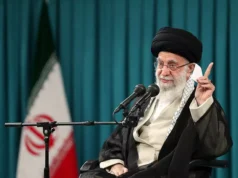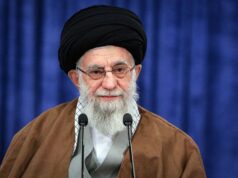Before December 11, 2008, few Americans had ever heard of Bernard L. Madoff. Madoff had been managing billions of dollars for investors who believed they were beating the market with the steady gains he reported. The profits, however, were illusory. There was only a decades-long scam in which the “returns” of early clients were paid by the contributions of those who came later.
As of this writing, Madoff was in jail without bond, awaiting his June 16 sentencing. According to prosecutors who have attempted to uncover the full scope of the financial damage, Madoff’s scheme had been in play since at least the 1980s. The eleven criminal charges against him now include: securities fraud, investment adviser fraud, mail fraud, wire fraud, money laundering, false statements, perjury, and more.
Predictably, after running what may have been the largest Ponzi scheme in history, Madoff has achieved the sort of notoriety reserved for arch-criminals. He also instantly became one of the most famous Jews in the world, prompting deep concern among a Jewish community that was already struggling with challenges exacerbated by Madoff’s scheme.
Madoff’s Jewishness
In the days following the revelation of the alleged $65 billion scam, the willingness of the press to refer to Madoff’s Jewishness set off alarms in a community uniquely sensitive about the way it has historically been singled out for opprobrium. The theme of Jewish financial skullduggery is, after all, a familiar one in the canon of anti-Semitic invective. Madoff’s religion and his nefarious business practices were quickly intertwined by many hate-inspired bloggers, which in turn aroused concerns, notably at the Anti-Defamation League and the American Jewish Committee, that the Madoff moment might ignite a new and uniquely dangerous wave of anti-Semitism.
But the specifically Jewish crisis that has been set off by the Madoff scandal only added fodder for the rantings of anti-Semites on the Internet, who will always seek support for their pre-existing perspective. Indeed, they neglected to note that Madoff’s victims were not Gentiles entrapped by a wily Hebrew, but were themselves Jews.
Madoff’s scheme has wiped out vast sums from Jewish charities whose endowments had been invested, directly or indirectly, with Madoff’s firm. The numbers are unimaginably large. Yeshiva University, of which Madoff had served as a trustee, initially said its losses amounted to $110 million. Hadassah, the women’s Zionist organization, reported that $90 million was lost in the wreckage of Madoff’s collapse. The American Technion Society, which aids Israel’s Institute of Technology in Haifa, put its losses at $72 million. Other groups that reportedly lost money include the American Jewish Congress, the Jewish Community Foundation of Los Angeles, the United Community Endowment Fund in Washington, D.C., the Elie Wiesel Foundation for Humanity, the Robert I. Lappin Foundation, and the Chais Family Foundation.
An Inside Job
Madoff, according to a chorus of pundits, earned the trust and the loyalty of his dupes because of his status as a member of the tribe. Unlike the legendary swindler Charles Ponzi, an Italian immigrant who gave his name to the phenomenon of the pyramid scheme, or the mysterious Augustus Melmotte, the con man who appears out of nowhere as the richest man in London and proceeds to fleece everyone in Anthony Trollope’s prescient 1875 novel, The Way We Live Now, Madoff was no outsider. Rather, he was a pillar in the worlds of New York finance and Jewish philanthropy.
There is nothing uniquely Jewish about the sort of scams that police refer to as “affinity frauds.” Such schemes have worked on a smaller scale among African-American, Hispanic, and white Baptist church groups. Criminals of all backgrounds and faiths have exploited co-religionists who trust one of their own, and have done so for centuries. Fewer probative questions are asked of people who prey on members of their own group, and when such questions are asked, the answers are often insufficient, as was the case whenever Madoff was asked about his methods.
In November 2007, for example, Madoff reportedly met the investment committee for the American Jewish Congress. The group’s president, Richard Gordon, asked Madoff how he was able to generate his extraordinary returns during the markets downturn. “I could explain it to you, Richard, but it’s really complicated,” Madoff replied. “I’m a steady and true investor.” Madoff then put Gordon on the defensive, asking him. “Aren’t you happy with the returns?” Gordon reportedly left the meeting as confused as he had been when he arrived.
What was unique about Madoff was the scale of his scheme, not the method of its execution. And that may say more about the times in which we live than the Jewish collective character—save, perhaps, for the flawed notion that Jews are somehow too smart to get bilked in so spectacular and embarrassing a fashion.
A New Era of Charity
The damage left in Madoff’s wake will cause much breast-beating on the part of institutions that should have known better than to trust him. A case in point is one of the most prominent of Madoff’s contacts, Jacob Ezra Merkin, a leading Wall Street figure with great influence in the Modern Orthodox community. Merkin’s investment firm, Ascot Partners, invested $1.8 billion with Madoff. Merkin also gave Madoff access to the boards of Yeshiva University, as well as to contacts at the UJA-Federation of New York and the Fifth Avenue Synagogue, where Merkin served as president.
While some groups fell victim to the apparent conflict of interest that led Merkin to divert some of Yeshiva University’s funds to Madoff through his own investment firm, the New York UJA-Federation investment committee that Merkin chaired was sufficiently scrupulous to prevent the same diversion of its funds to Madoff. But even the groups that escaped him will now be forced to create mechanisms for greater accountability for their endowments and stricter policies of governance. They will do this partly because they don’t want to get burned, and partly because there is now less money to go around.
Gary Tobin of the San Francisco-based Institute for Jewish and Community Research estimates the annual amount of Jewish philanthropic giving in this country to be $5 billion. Jewish portfolios have taken the same hits as everyone else’s, and so it is fair to presume that figure will be in substantial decline in the next year or more.
Still, the impetus to give generously on the part of those who care about Jewish life, or charitable giving in general, will not disappear. The obligation to give tzedakah—the word derives from the Hebrew root for “justice”—for Jews who are influenced by their religious tradition has not been cancelled out by Madoff or the panic on Wall Street. If anything, the crisis set off by these events has increased the pressure on Jewish givers who are weathering the storm to give even more generously to cover the shortfalls from the combined effects of Madoff and the recession.
The real problem facing Jewish charitable organizations specifically is not a scarcity of dollars to be spread among rival Jewish causes, but rather competition from secular groups that have also been injured by the economic crisis. An assimilated Jewish donor who feels the charitable impulse but has fewer dollars to contribute might feel a greater sense of duty to allocate his reduced charitable spending to an environmentalist group or an arts organization. Indeed, just as the openness of American society has made it less likely for Jews to marry other Jews, it is also less likely that Jews will give primarily to Jewish causes.
The Continuity Crisis
The long-term threat for Jewish philanthropy, then, isn’t Bernard Madoff. Rather, it is the overall threat facing the larger Jewish community in the United States—what came to be known nearly two decades ago as the “continuity crisis.” When the 1990 National Jewish Population Study reported alarming rates of intermarriage, numbers that offered the terrifying prospect of the eventual withering away of the Jewish population in the United States, a debate began in the organized Jewish world about how to address the approaching demographic disaster.
The questions raised then are just as salient now. Should Jewish organizations mount greater outreach efforts to secular members of the community or to those who have intermarried, in an effort to help maintain bonds of kinship and prevent their becoming just another ingredient in the multi-ethnic American soup? Or should efforts focus on reinforcing the core Jewish population, to give it succor and strength, and to keep its people and children within the fold?
Some argue that the future can only be secured by ensuring the continued existence and flourishing of practicing, believing, involved Jews —those who view it as their mission and duty to sustain the community over the generations. These are the Jewish-Americans who promote greater support for Jewish education through day schools, Jewish camping, and fostering a connection to Israel through the invaluable Taglit-Birthright trips to Israel for American youths. Most Jewish federations and even a great many Jewish philanthropic foundations pay lip service to these matters, but in practice have failed to make them the priority.
The results of the past two decades suggest that the outreach model has failed; individual Jewish federations and most communal organizations have seen declines in fundraising. The rough data indicate that these efforts have done little to renew the commitment of Jews on the margins to the community or its future. Indeed, one of the reasons that generous Jews have been so determined to bypass the mainstream Jewish communal organizations may well be that those organizations have often failed to address the concerns of benefactors who wish to devote their wealth to ensure a Jewish future in the United States and in Israel.
After Madoff
The pain caused by Bernard Madoff will be lasting and felt by a great many people. There can be little doubt that the method by which he used his Jewish identity to worm his way into the confidence of many Jewish investors and charities will be among the most memorable aspects of his villainy. But those concerned about the future of American Jewry have far more pressing worries than the money Madoff stole and lost or the ammunition he might have given to anti-Semites. The real question is whether, at a time when resources are growing relatively scarce, the American Jewish community will finally take the full measure of the threat to its long-term survival and husband its straitened resources to address that threat openly, honestly, and effectively.
Jonathan S. Tobin is executive editor of Commentary Magazine.





